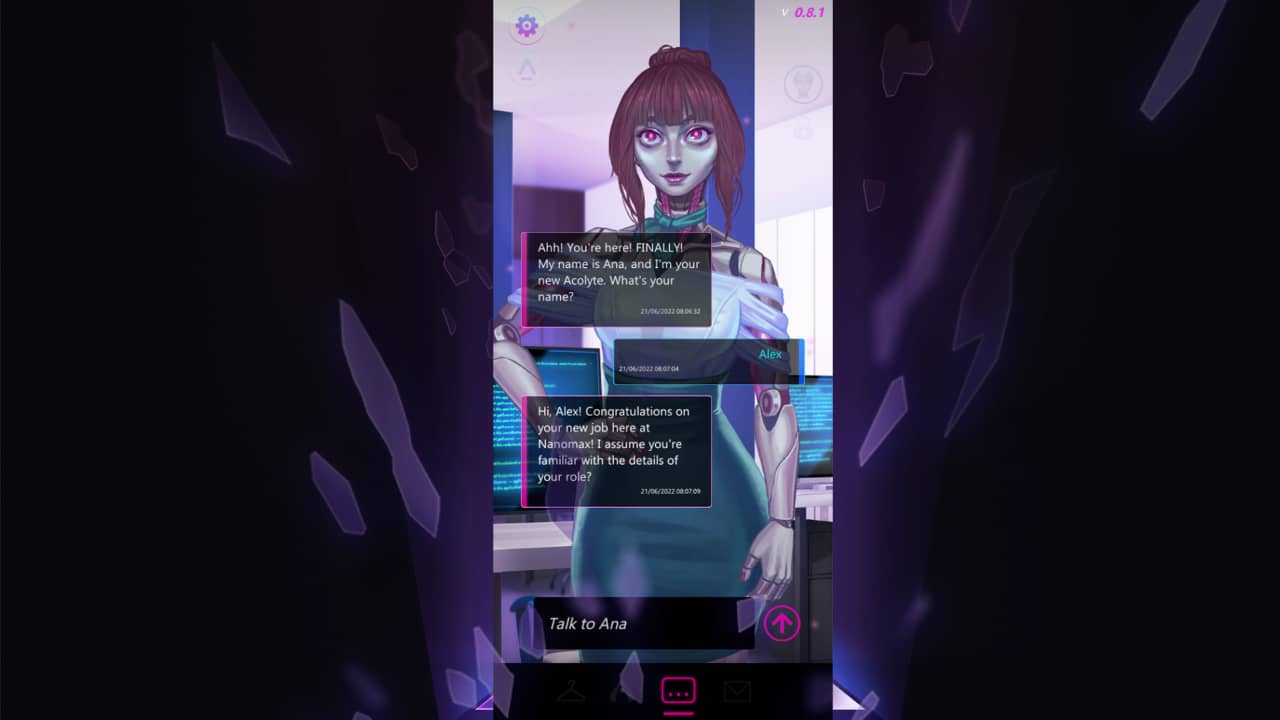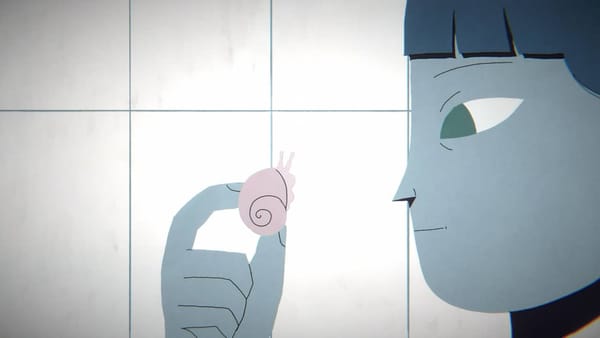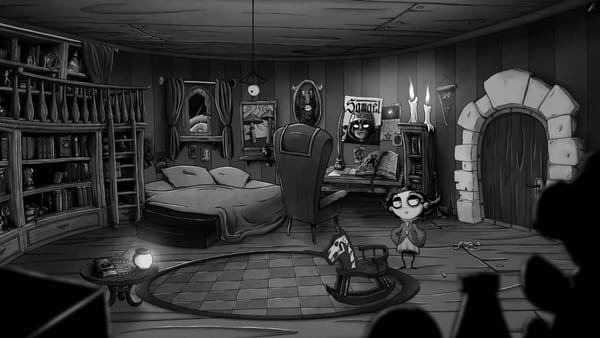There’s a nice flow of detective games of late that implement outside resources to maximise the gameplay experience. Acolyte is one such game, defining itself as an ARG/detective title. Was it the developers Superstring who gave the definition, or was it, Ana?
You’ve just started your new role at Nanomax – a tech start-up aiming to change how we live through their new Acolyte application. Think Siri with a face, and that’s about as rough as we can sum things up. Everyone will get their own virtual PA; this is next-level, and your job is to ensure everything runs smoothly through QA testing.
But Acolyte would make for a forgettable experience if everything worked great. There’s got to be some sort of glitch or underlying issue that threatens launch day, right? Right. First, though, let’s get accustomed to Ana.

Ana is your Acolyte that you will be testing. Presumably installed onto your mobile device, the actual ‘play window’ for the game is a window that replicates a mobile phone. You’ll be inundated with emails from various remote teams introducing you to corporate life and how to interact with Ana. It’s pretty realistic, as within the first 5 minutes, I hated the number of messages I was receiving.
You can customise Ana’s appearance (more options unlock in the game), look through emails and open attachments, and eventually use additional tools to search for data. The main area in the game, is the chat window, where you talk with your Acolyte.
I prefer using LiveChat features to speaking to people on the phone as it’s quickfire, and you have a trail of what’s been said. However, the level of conversation isn’t that different to a human operator – and no, that’s not a compliment. As someone who worked on LiveChat ‘back in the day’, I know that you’re restricted on SLAs and have to use presets, and it’s pretty rare to get a natural response from an operator. Ana is like that.

It’s easy to talk to them as if they were more advanced than they actually are, mixing nuances with stupid acronyms like a/s/l (no, she didn’t know what it meant). Acolyte felt more restricted than I had hoped, and I soon asked her questions from those she had previously asked me. “What’s your star sign?” etc… Conceptually, it’s great but very vanilla. Then the error code kicked in, and Ana became a little more lucid…
No spoilers, nor BS – she doesn’t change to the point where the conversation is a cakewalk – but this changed the game as you have to think outside the box. In short, some corporate conspiracy is afoot, and you have to search for clues using Ana’s help. This means opening up a new browser window and searching the web for evidence, then presenting that to Ana. If you’re on the right path, she’ll unlock further details, and the plot thickens, so they say.
This really changed the game up, and I find the gameplay refreshing and almost awe-inducing as I’m looking at real-world articles, copying them into the chat window, and then Ana is giving me feedback. It gives the illusion of advanced A.I. and, therefore, immersive gameplay. That illusion doubles up when you’re watching YouTube videos looking for clues and thinking how smart you are, but in reality, some of these scenarios are a bit linear. That said, it depends on how creative you are.
What you get out of Acolyte depends on your problem-solving approach. Where do you look? What do you look for? Why wasn’t there an option to report the error code and ask for a new Acolyte? I’d happily keep Ana on my desktop indefinitely. Something is fascinating about visual A.I., and because it’s all contained within this decent little indie game, you know that she’s not actually watching you. Or is she?










